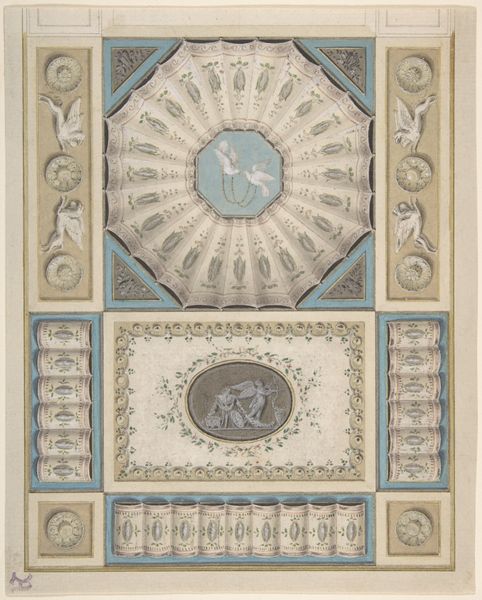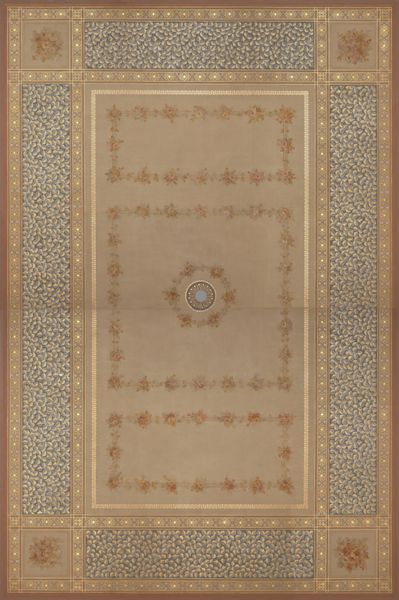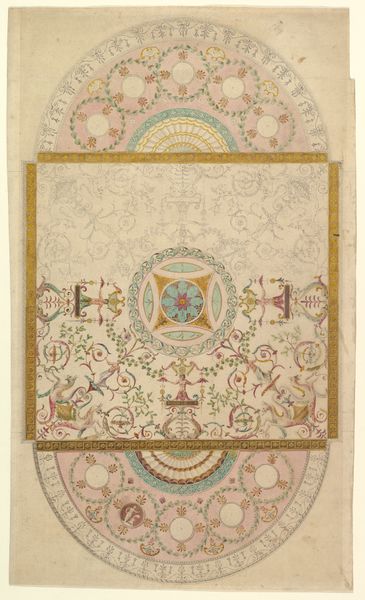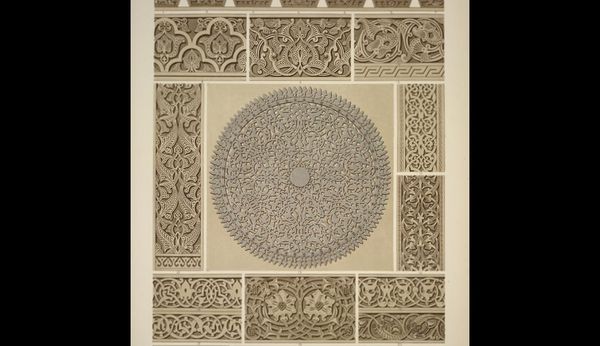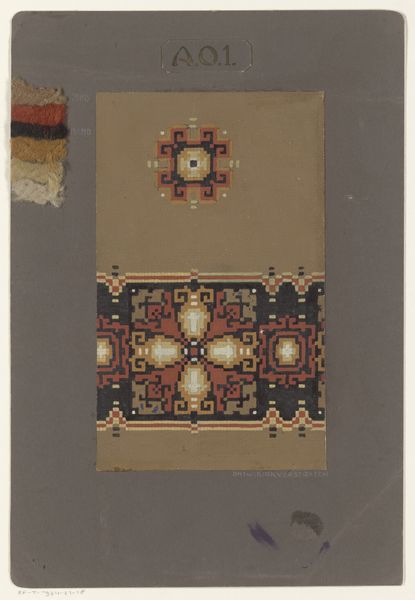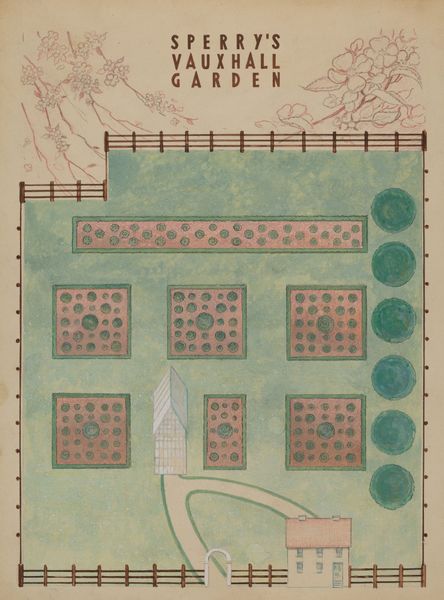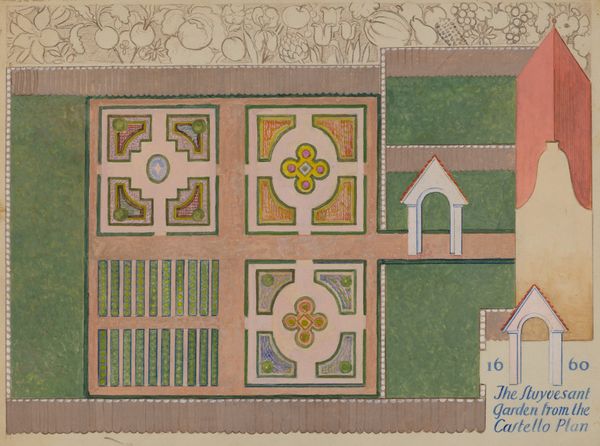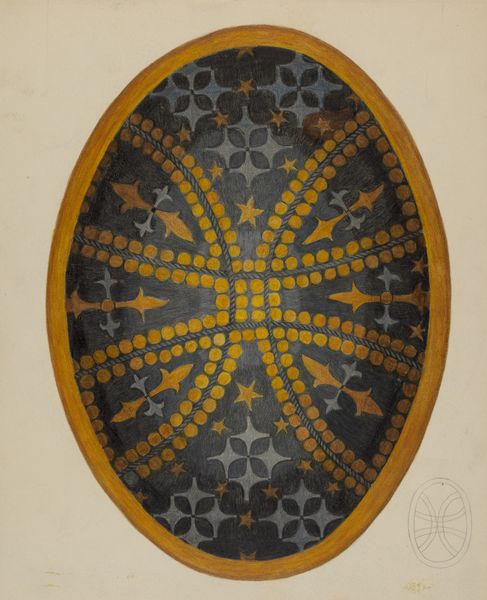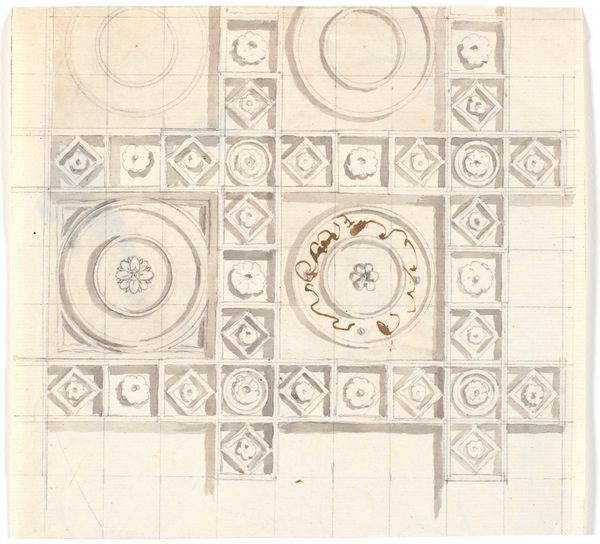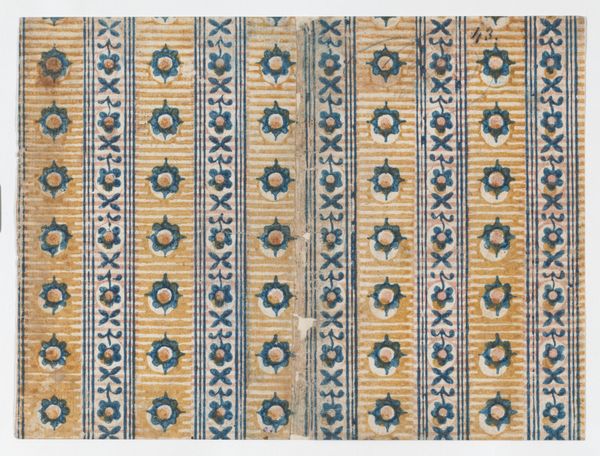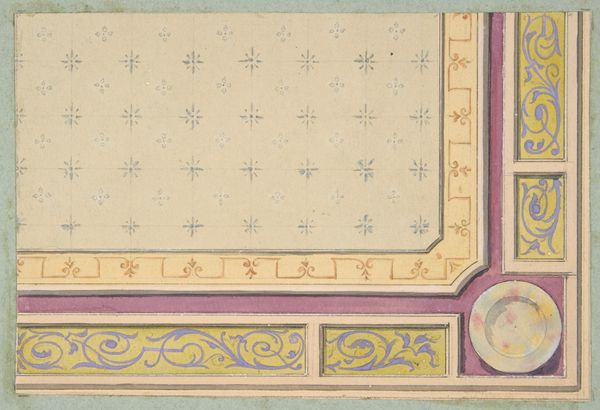
drawing, watercolor
#
drawing
#
neoclacissism
#
watercolor
#
geometric
#
decorative-art
Dimensions: 410 mm (height) x 518 mm (width) (bladmaal)
Curator: At first glance, I'm struck by the almost obsessive detail in this drawing, a grid punctuated with these jewel-like floral motifs. It feels incredibly controlled, like a map of some arcane language. Editor: Indeed. This watercolor drawing, dating from the 1790s, is titled "Loftet. Udkast til dekoration af audienssalen," or, "The Ceiling. Design for the Decoration of the Audience Hall". It’s by Nicolai Abildgaard and is part of the collection at the SMK, the National Gallery of Denmark. It offers a fascinating glimpse into late 18th-century neoclassical aesthetics and the socio-political forces at play in courtly life. Curator: Ah, that makes sense. The formality, the precision, it all speaks to that era. But those floral elements—are they purely decorative or do they carry symbolic weight? Editor: Almost certainly symbolic. In neoclassical art, geometric forms, especially circles and squares, evoke order, reason, and idealized structures, representing an aspirational vision of society. The repetition of those floral forms nested within these geometric frames? It feels calculated, designed to reinforce power through visual harmony and maybe a dash of cultivated naturalism, a common desire for that time period. Curator: So the king or queen who'd be receiving audiences beneath this ceiling would, through this imagery, ideally be reminded of the divinely ordained order and beauty of their reign. The light streaming through those 'stars'… it’s practically an ideological program cast onto the very architecture. Editor: Precisely! And think of the architecture of power itself, and of memory. The use of specific colors and placements becomes akin to embedding coded messaging into the visual experience of those within that space, an immersive way of projecting authority through visual codes, creating a very literal impression. The layout's regularity could signify reliability of character for royalty as a signifier of leadership. Curator: A blueprint for visual persuasion. Seeing this ceiling design, I understand how much intention underlies even what we might perceive as simply 'decoration'. Editor: It underscores that art, even in seemingly ornamental forms, often plays a very real role in articulating, performing and solidifying socio-political structures. Art as political communication is essential to analyze through the art and the context where this design was made. Curator: Looking closely, I almost see these repetitive designs, a very well structured piece indeed. It truly echoes the power of patterns for that period. Editor: A beautiful testament to its era and power as an ideogram and memory.
Comments
No comments
Be the first to comment and join the conversation on the ultimate creative platform.
